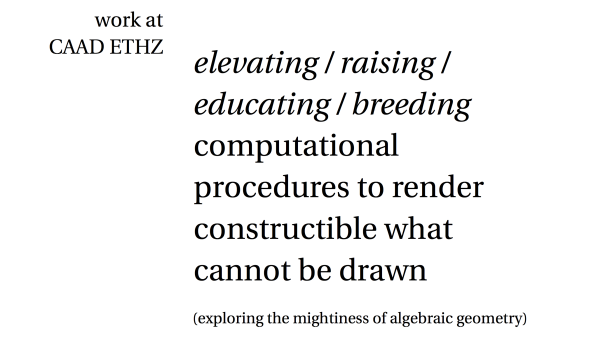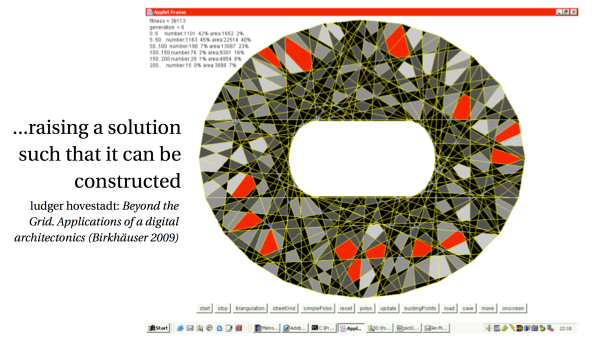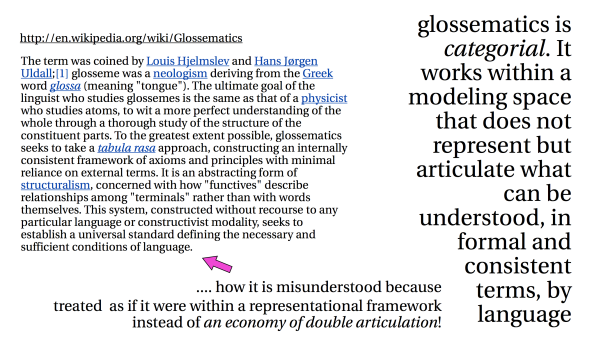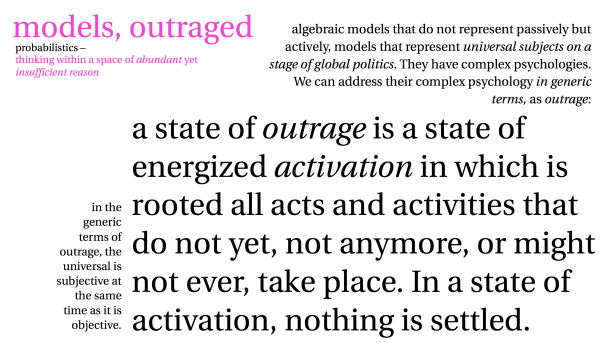my talk will attempt to pick up the beautiful mentioning in the conference flyer of “models as mighty miniatures“, under the tentative title of: “Die Empörung des Modells // models, outraged“.
The conference is organised by the Forschungsschwerpunkt Transdisciplinarity and the MAS Spatial Design: Florian Dombois, Stephan Trüby, Reinhard Wendler. website, flyer of the conference, another flyer of the conference.
I would like to present and discuss some of our approaches (at the ETH CAAD chair, and my theory lab) of how to address the concept of modelling within a framework of computation and computability. I would like to profile an “algebraic logics” against a “logical logics“ by discussing the different kinds of questions they engender and by showing exemplarily what kinds of different modelling practices this abstract distinction can inform. Basically, the distinction is between genuinely metrical spaces (metrical before they are “substantial“) on the side of algebraic logics, and spaces that are „substantial“ before they are metrical on the side of logical logics.
And then I would like to present a particular approach of how algebraic modelling could be theorized: The approach draws a lot from Louis Hjelmselv’s glossematics, and applies it to artefacts. My interest with this is not so much a moralization of a model’s „mightyness“, than working towards a textual grammar of artefacts as one-of-a-kind cases. If we think an energetic circulation to be constitutive for models (rather than a relation of representation/copy) we can think about models as the activation of ideas. We can address a model’s energetic circulation by a double articulation between two fictitious yet general concepts: A = [the integrity of an object] and B = [the outrage of models]. In a nutshell: the „outrage“ / „Empörung“ corresponds to the probabilistic treatment of components, and the „integrity“ corresponds to the adequacy in scope and scale between “model” and „problem“/„idea“ activated through modelling.
download slides as pdf: VBuehlmann Empoerung des Modells
1st slide
2nd slide
3rd slide
4th slide
5th slide
6th slide
7th slide
8th slide
9th slide
10th slide
11th slide
12th slide
13th slide
14th slide
15th slide
16th slide
17th slide
18th slide
19th slide
20th slide
21st slide
22nd slide
23rd slide
related posts:






















